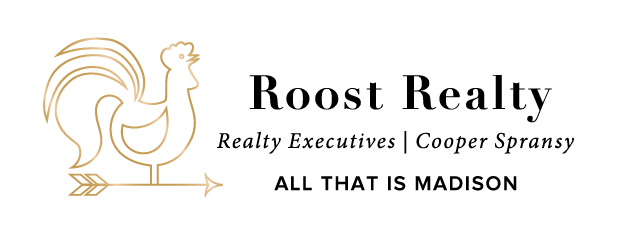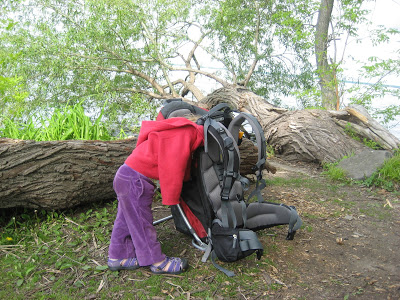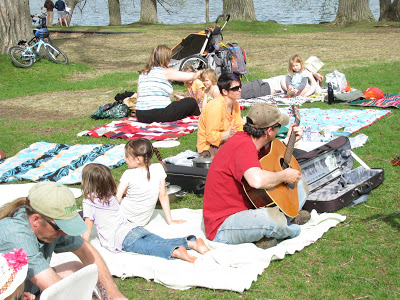An Ode to City Parks
/Editor's note: As the summer begins to wane, we have green space on the brain. So we're especially pleased to bring you this guest post from fellow Madisonian Jessica Becker (full bio below). This post was originally published on Jessica's blog, Between Two Lakes and a Hard Place. Enjoy!
***
This summer, an artist in Brooklyn built a campground on a roof in the city. People who presumably wanted to unplug from Facebook, but didn't have enough vacation time saved up for a real vacation, came to "camp out" for the night.
It's interesting to me because I think that I camp to get with the trees and scenery. More and more, what is relaxing is to be out of touch. Packing up, I always fret: This is a lot of work for a bad night's sleep! Still, somehow my longing for a no-reception zone tips the scale enough that I put in the effort a few times a year.
But I go to a park almost daily.
Madison has 12 parks for every 10,000 people, more than any other U.S. city by far. New parks are being built as I write.
These days, all I can think about is how much more could be happening in these parks. Parks don't bring in tax revenue, they cost a lot of public money, so what are they for, anyway?
The underused, funky old tennis court on top of a water utility building in Reynolds Park comes to mind. As far as I know, it's used about once a week for a game of bike polo. Why are there no art installations, dj dance parties, or roller-rink pop-ups on that rooftop?
Parks are good for gathering community. I'm impressed by a summer program the Chicago Mayor started called Night Out in the Parks. It is a "citywide effort to bring neighbors together and celebrate the awesome resource of the Chicago Parks District." A handful of underused parks were selected to host Redmoon for an awesome transformation-through-art spectacle that included a DJ with huge speakers. It evolved into something different in each place.
Parks are good for relaxation. Of course, we all should relax more. We know it's important, but still, 61% of us work during vacation. Americans don't have a siesta culture. I like what Rebecca Ryan wrote in Madison Magazine: "Being busy doesn’t make me special. It makes me normal, in an America-obsession-with-being-
Parks are good for communing with Nature. The upshot of having a young child who wouldn't take a nap in her crib is that I got to walk a lot. I've never had a dog, so I didn't realize how cool it is to walk the same route every day! I had no idea there were so many species of birds that pass through, and live in, the Tenney Park lagoon. I got really excited the first time I saw the flock of swans on lake Mendota. Now I wait for them. Of course, the birds are not coming to see me. They need that lagoon, those trees, that "wild" space in the middle of the city.
Parks are good for having experiences. This summer, the City of Madison agreed to lease a City-owned but under-used boathouse to a business guy. "I intend it to become a destination, an icon of outdoor living and quality of life, a place people will want to return to again and again," the owner explained. Now, people can go to Brittingham Park for an iced coffee, an ice-cream cone, even a sandwich. For me, it is one of the best things that has happened in the City this year. I stroll over from my office, sit under an umbrella on the new wooden patio, do a little paperwork, watch people who are paddling around in rented boats (they rent boats, too), and feel so smitten with my life.
I hope the City continues to experiment with its parks. Here's an idea: What if you could go to Tenney Park on a Sunday afternoon for tea and a piece of cake on the deck of the pretty new shelter (where you can rent ice skates and buy hot cocoa in winter). The kids would run around, you'd chat with a few neighbors, maybe read a magazine you found on a shelf among books donated by neighbors as part of a lending library....
 Jessica Becker is a blogger, community leader, and project visionary. She consults on projects related to healthy, livable cities; public space; arts and culture; parks and the natural features that shape our lives and lifestyle; and making connections between the small-business and non-profit sectors to make life more interesting and meaningful. She writes about the things that intrigue her, searches for ways to improve her neighborhood and city, and is always excited to contribute to projects of all shapes and sizes as a grant-writer, fund-raiser, project-leader, volunteer-manager, or grunt laborer. You can read more of her writing and ruminations at Between Two Lakes and a Hard Place.
Jessica Becker is a blogger, community leader, and project visionary. She consults on projects related to healthy, livable cities; public space; arts and culture; parks and the natural features that shape our lives and lifestyle; and making connections between the small-business and non-profit sectors to make life more interesting and meaningful. She writes about the things that intrigue her, searches for ways to improve her neighborhood and city, and is always excited to contribute to projects of all shapes and sizes as a grant-writer, fund-raiser, project-leader, volunteer-manager, or grunt laborer. You can read more of her writing and ruminations at Between Two Lakes and a Hard Place.



